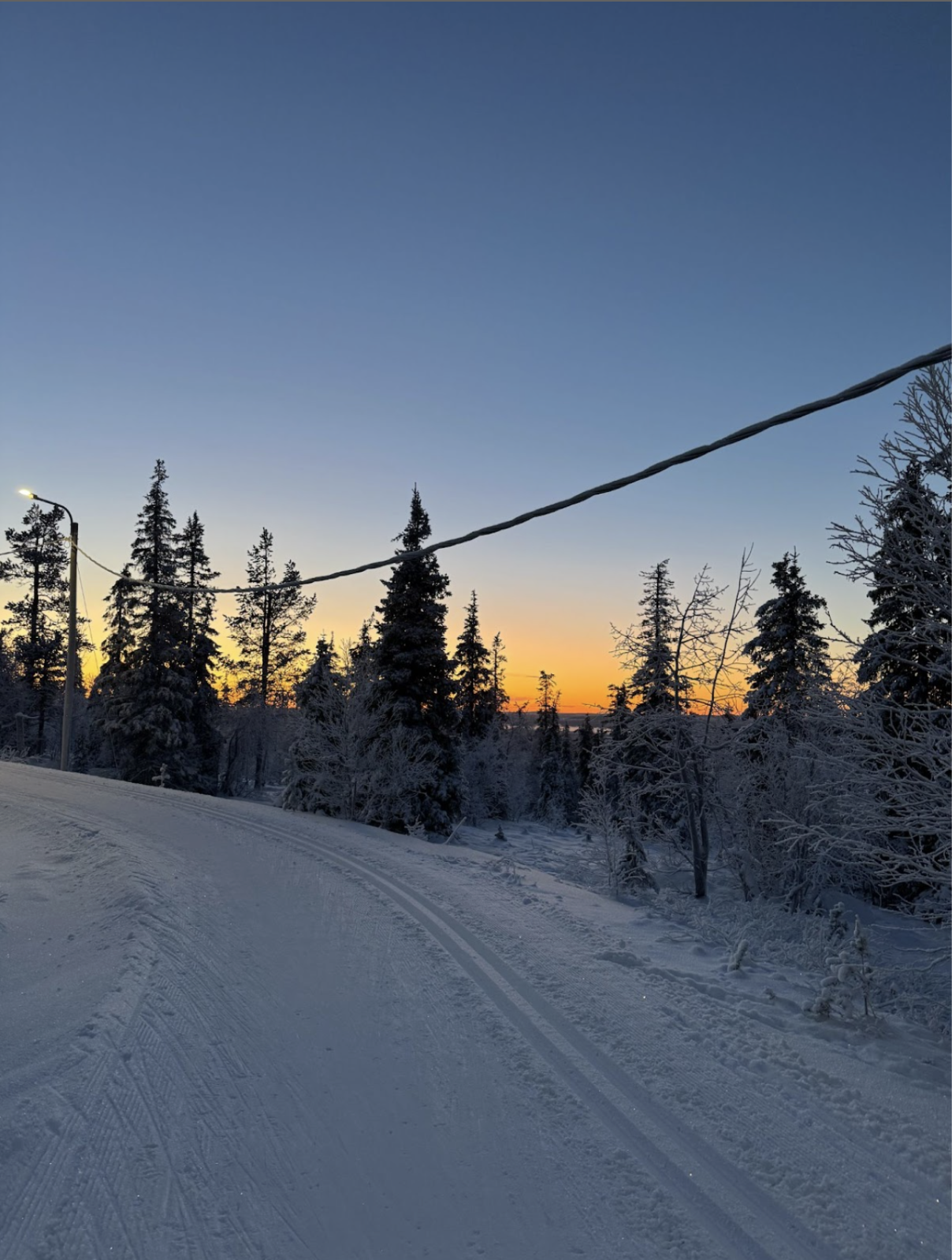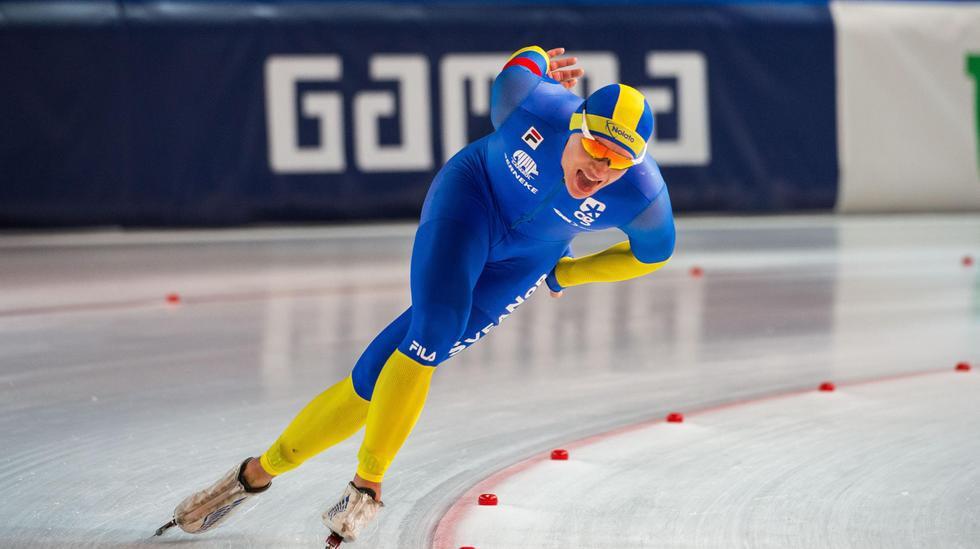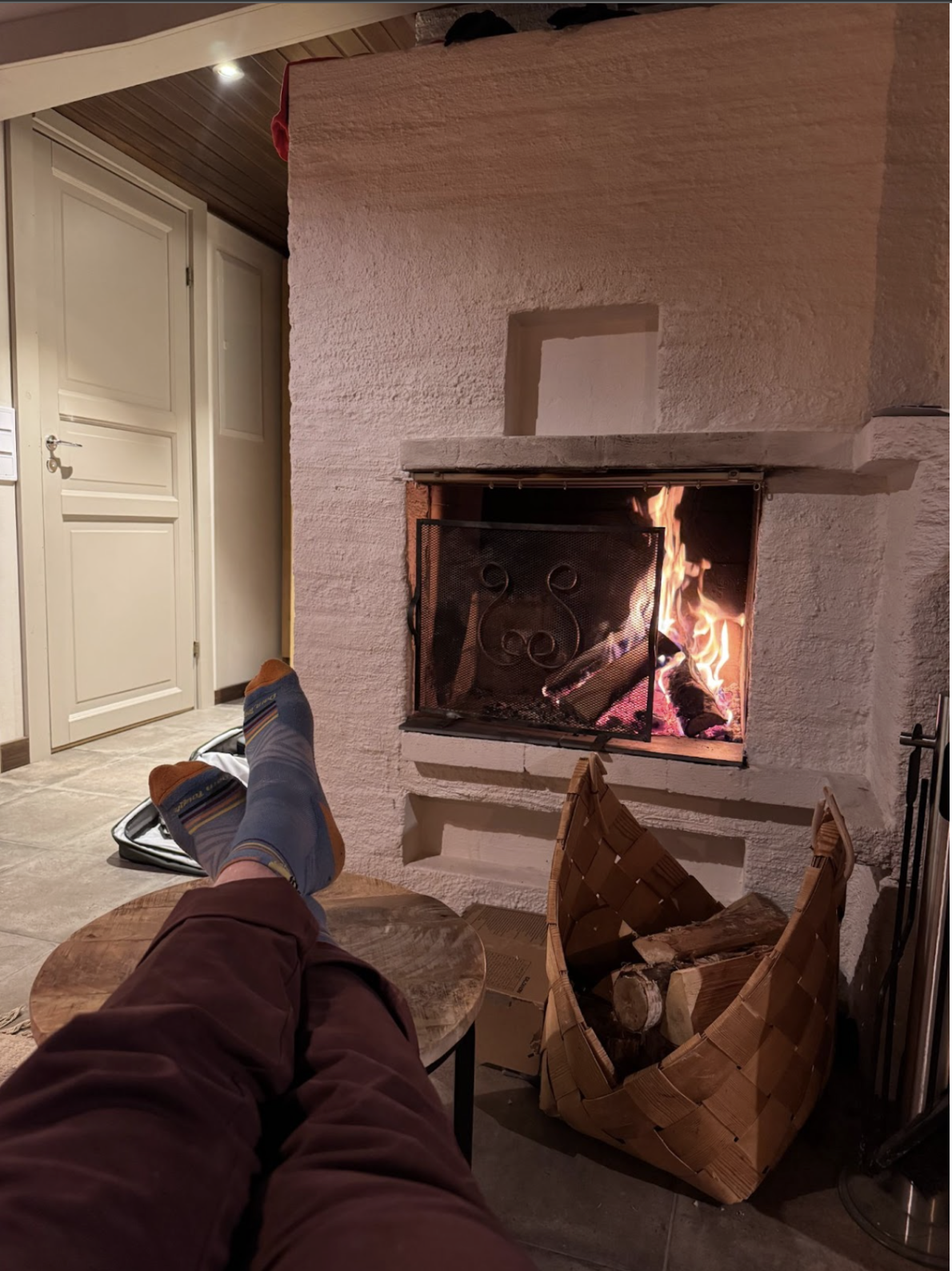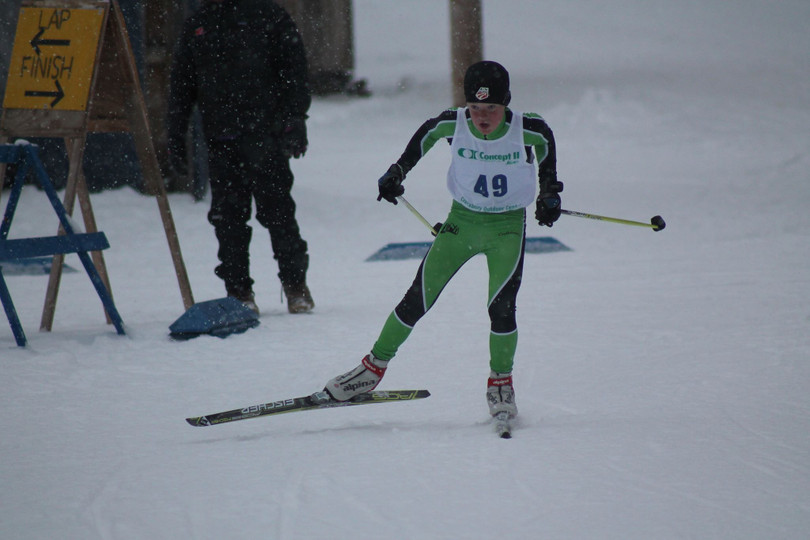Posted by Jack Young: EnjoyWinter Athlete Force on Nov 21st 2025
How I Train as a Sprint Specialist
I just arrived at our pre-camp in Muonio, Finland for the upcoming World Cup season, and I began to reflect on the fall of training I’ve had. This is the first year of my ski career where I can confidently say that I am only focusing on sprinting. In high school I was always just trying to be the best all around skier I could be. Later, in college, I began to focus a little bit more on sprinting, but I still cared about how I did at EISA races and NCAA championships. Now, in my first year of pro skiing, I am purely a sprinter and am happy to say so.

Sunset in Muonio
So what does this mean for the training I’ve done this year? Simply put, not much. The overall layout of the training plan is pretty much the same as it has been in the past, and the summer months are nearly identical. The major differences between this year and the last few years for me is a small decrease in total volume (~50 hours), shorter, faster intensity sessions, and a slightly higher degree of focus on how rested I am for those short, fast sessions. These changes are pretty small and probably not worthy of an entire blog post. However, I did make some major changes starting my junior year of college when I started to focus on sprinting, so I’ll focus on those.
Before my Junior year of college, I had had some decent qualifiers in my life with the best one being a 17th place my freshman year of college at the skate sprint at US nationals 2022 in Soldier Hollow. Nothing spectacular but good enough to fuel some lofty aspirations for the future. Like others, I always trained at a relatively high volume in the summer with the bulk of intensity done at threshold. In the fall (as long as I wasn’t too bruised up from a Friday night high school football game) the volume decreased and the intervals increased in number and in volume. A standard fall interval session through high school was 4x4’ hard. Before my junior year, I never did any sessions that were intentionally done to get better at sprint qualifiers. Of course, I did plenty of speed sessions and some shorter interval sessions, but the caveat is that for none of them was the instruction to ski each interval at roughly sprint qualifier pace.

He wasn’t thinking about qualifiers
This all changed during my junior year of college when I made a conscious decision to prioritize getting better at qualifying, and I set a goal of making the North American world cups that year. In the pursuit of getting faster at sprint qualifiers, I had one guiding principle: if you do something a lot, you get better at it. However, This moto only works to a certain extent; oftentimes, figuring out how much of something is too much in the context of endurance training is easier said than done. Luckily, I had recently read a Swedish speed skater, Nils van der Poel’s training manifest: How to Skate a 10k (and half a 10k) which has some great ideas on interval length. Basically, his bread and butter interval sessions while training for 5ks was 3 sets of 3x2 minutes at exactly world record pace. Since a 5k in skating takes 12 minutes, he was always doing somewhere around 1.5x the amount of work he’d have to do in a race, just split up into smaller bits. If you apply this to sprinting you end up with a workout that is something like 2 sets of 3x45 seconds. Because van der Poel was doing workouts like this sometimes five times a week, and I aim to do two or three intensity sessions a week, it would be reasonable for me to do a little bit more on time per workout. Hence, I landed on the sweet spot being somewhere around 6 minutes off on time. This also generally lines up with the ideology of training 800m meter runners which I think is a very similar event to a sprint qualifier.

Nils van der Poel
Because of the variance in terrain and distance of sprint courses, it would not work to have one session that I simply repeated over and over again. Therefore, I settled on splitting up the allotted 6 minutes of on time into anything from 12x30”, 8x45”, 6x1’, or even 4x90”. In the last few years I have also played around with different amounts of rest and intervals such as 20 seconds on 40 seconds off then 20 seconds on again (think broken 400m running on a track). I liked these workouts, but I don’t think they are revolutionary in any way compared to simply 6x1’.
In addition, the terrain that these intervals were done on could be adapted to best mimic courses that I knew I would encounter the coming winter. For example, this year, I made an effort to do a few sessions that went from striding into a double pole finish to work on what I would encounter this year at Ruka. The problem with this approach is that it is impossible to know objectively what qualifier pace actually is. When I started implementing these sessions, I often stressed about this simply because I had no idea if I was going fast enough. Now that I have a couple of good years under my belt, I’m relatively confident that however fast I can evenly split these types of workouts is close enough to qualifier pace to be productive. The 30 second intervals will likely be a little bit faster which is probably good and necessary. On the other side of things, an evenly split 4x90” session on gradual or rolling terrain will probably be closest to true qualifier pace.
During my last two years of college, I would work these sessions once or twice a week around the existing training plan. During these years I still did plenty of L4 intervals in the fall and a fair bit of volume as well. This treated me well enough, but I know that some of the sessions I was doing in college were not ideal for getting faster at sprinting. This year, instead of working these specific sprint sessions around an existing training plan, I was able to make them the center of the training plan.
Although I still have some room to improve in qualifiers, considering the consistency in which I qualified for the skate rounds last year at the world cup, I changed it up and spent some time doing workouts that go beyond pure qualifier workouts this fall. These workouts were more standard in plans I’ve been prescribed in the past, for they are true “level five” workouts. All sprinting is done at L5 if you need to classify things based on intensity zones, but only doing 6 minutes of on time per session does not raise blood lactate levels to what you’d expect from an actual L5 workout. These workouts, examples being 10x1’, 8x90”, or really anything in the 10 minutes of on time range with relatively short intervals are designed so that your body gets better at using lactate as fuel and moving efficiently while blood lactate levels are extremely high. These workouts are used by both sprinters and distance skiers, but I think they most directly apply to getting better at moving through the rounds on a sprint day. I would also argue that they could be a good part of a qualifier centered training plan as well, for it’s hard to simulate the end of a 3 minute qualifier using the shorter workouts I’ve described earlier.

Level 5
In short, the change that I made that I think propelled me to the next level was the focus on quality of intensity sessions. Of course, making every session as high quality as possible requires a lot of small changes elsewhere, but that focus is the easiest to pinpoint. When I made the mental shift of doing intervals that were very specifically designed to mimic sprint qualifiers, it quickly became clear how rested I needed to be to execute the sessions. In order for each session to be of quality (defined by actually being able to move at or faster than qualifier pace) I couldn’t get away with doing training hours in the afternoon just for the sake of getting hours. Although it was specifically focused on sprinting, I think the focus on spending the entire fall in a more rested state also improved my distance skiing.

Achieving a restful state in front of the fireplace
As I continue along in my career, my approach to training will undoubtedly evolve. If I can get to a point where I am more confident in qualifying for World Cup heats in both skate and classic every time, the focus of my intervals will likely move to the rounds. I may even bring focus back to training for distance skiing as my career progresses. Regardless of any changes I make in the future, I will try to never lose the amount of attention I’ve started paying to the quality of every interval session I am doing, especially in the fall. I’ve found that regardless of how much one trains, it is very hard to make any significant improvements without actually putting in quality work at the intensity you will have to race at.

